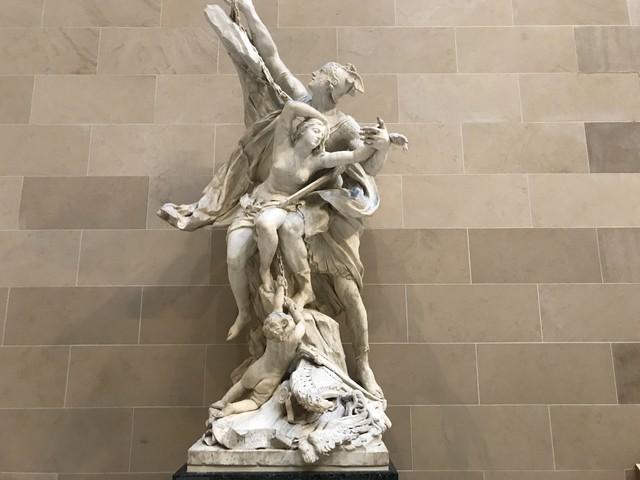Perseus and Andromeda

Pierre PUGET.
Illustration of an episode of Ovid's Metamorphoses. Andromeda, attached to the rock, is delivered to a sea monster that devastates the region, sent by Neptune to avenge Juno outraged by the beauty of the princess. Perseus, son of Jupiter and Danae, kills the dragon and delivers Andromeda before marrying him. At the foot, figure the head of Medusa with the hair of snakes that Perseus had killed before. Executed from 1678 to 1684 for King Louis XIV, probably with the collaboration of the sculptor Christophe Veyrier. Placed in the Garden of Versailles at the Green Carpet in 1685.
In this sculpture the movement is given by the Perseus coat which seems to be as swollen by the wind, the pause of the characters gives even more movement, his body is entirely in tension: arm outstretched, foot off the ground. Andromeda's body is also in motion even if it is passive in this scene, it seems to fall from its rock in the arms of Perseus. The angel that separates from these two intertwined bodies and pulls the chain backwards serves as a link with the objects piled up at the feet of the characters.
© Tourblink
Pierre Puget (1620-1694), is an illustrious French sculptor, who was trained during his travels in Italy whose influences are omnipresent in his work. He is known as the most baroque of sculptors, and this sculpture of Perseus and Andromeda is an example. This Carrara marble sculpture was made between 1678 and 1684 for King Louis XIV for the Garden of Versailles. The decor at the foot of the characters serves as a reminder of the myth and helps identify it. It is a heap of objects in a very baroque way. Just as the bodies intermingled with the musculature, for Perseus, and the pulpit, for Andromeda, have something reminiscent of Rubens' paintings.